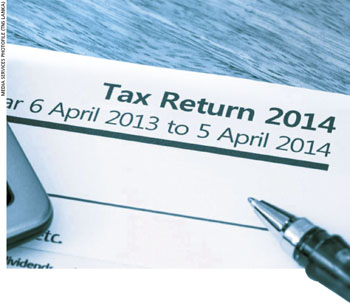THE TAX REGIME
Courtesy Centre for Poverty Analysis (CEPA)
VAT FAUX PAS
A regressive taxation policy adversely impacts poorer segments of society
 In less than half a century, Value Added Tax (VAT) has become one of the most dominant instruments for revenue collection across the globe. VAT is currently adopted by over 150 countries, and accounts for approximately 20 percent of worldwide tax revenues. In The Rise of the Value Added Tax, Kathryn James estimates that more than four billion people – or 70 percent of the world’s population – live in countries that levy VAT.
In less than half a century, Value Added Tax (VAT) has become one of the most dominant instruments for revenue collection across the globe. VAT is currently adopted by over 150 countries, and accounts for approximately 20 percent of worldwide tax revenues. In The Rise of the Value Added Tax, Kathryn James estimates that more than four billion people – or 70 percent of the world’s population – live in countries that levy VAT.
In Sri Lanka, the VAT Act replaced the Goods and Services Tax (GST) in 2002, as a tax on domestic consumption of goods and services. Although Sri Lanka aimed to emulate the VAT system operated in many other countries, it has undergone myriad amendments and exemptions, only to become the rigid, opaque system it is today.
While creating legal loopholes, administrative bottlenecks and convoluted payment strategies, these exemptions have also caused an erosion of the targeted tax base, and undermined the benefits of a flexible, simple and transparent tax regime.
Last year, approximately 80 percent of tax revenue came from indirect taxation, whereas a mere 20 percent was derived from direct taxes. As Dr. Saman Kelegama infers – in Anomalies in the Taxation System in Sri Lanka: Need for Reform and Restructuring – the majority of the tax burden falls on lower income groups.
According to a study conducted by Pahan Prasada et al. – titled ‘An Analysis of Incidence of Commodity Taxation on the Income Distribution in Sri Lanka’ – indirect commodity taxation is used widely to reverse the dwindling revenue-to-GDP ratio.
However, since this is employed irrespective of particular consumption patterns of specific income groups, the poor find it extremely challenging to maintain or improve their standard of living. Indirect taxation causes a disproportionately larger burden on lower income groups while, in the case of many high-income earners, this additional cost is somewhat negligible.
The study points out that pro-poor measures such as government subsidies and transfer payments are nullified by the additional cost incurred because of the tax, leading to wastage of public funds.
When the demand for a commodity that is taxed is inelastic, the burden on the poor is even greater, as producers are able to recoup the tax from consumers, resulting in higher prices. Although the effect of the tax on essential goods and services is felt across all income groups, it multiplies for low-income earners.
The study also claims that commodity taxes such as GST (now VAT) and import tariffs have a significant distributional impact, as they’re not income-group specific. In determining the distributional impact of a tax, it must first be determined if it is progressive or regressive.
It is considered progressive if the average tax rate rises with increasing incomes, whereas a tax is regressive if it garners a larger percentage of income from low-income earners than high-income earners. Hence, regressive taxation is certainly not geared towards the poor, as it compels them to sacrifice a considerably larger proportion of their income, while high-income earners pay a much smaller percentage.
Ninety-six percent of regressive tax instruments are implemented on basic essential goods, whereas progressive taxation is espoused for commodities that are largely consumed by higher income groups. The revenue-to-GDP ratio has declined, despite an increase in per capita income. This is because taxation is primarily regressive in this country. To continue in this manner is, indeed, counterproductive. It seems as if the poor, themselves, are financing the various subsidies and benefits they receive from government!
Sri Lanka’s tax system is known to be arbitrary, convoluted and inconsistent. The World Bank and PricewaterhouseCoopers ranked Sri Lanka 158th out of 189 countries, for the ease of paying taxes in 2016. This dismal state of the tax structure has had an injurious impact on Sri Lanka’s poor, and failed to redistribute income fairly. It has thus driven large numbers of people to poverty.
Although the Government has taken several measures to rectify the situation, it has a long way to go, in terms of further reform to the tax structure, as well as effective changes to social protection policies.
An effective amalgamation of measures geared towards this end would, no doubt, result in a mechanism that achieves the growth of which Sri Lanka is capable.
– Compiled by Asela Ekanayake






